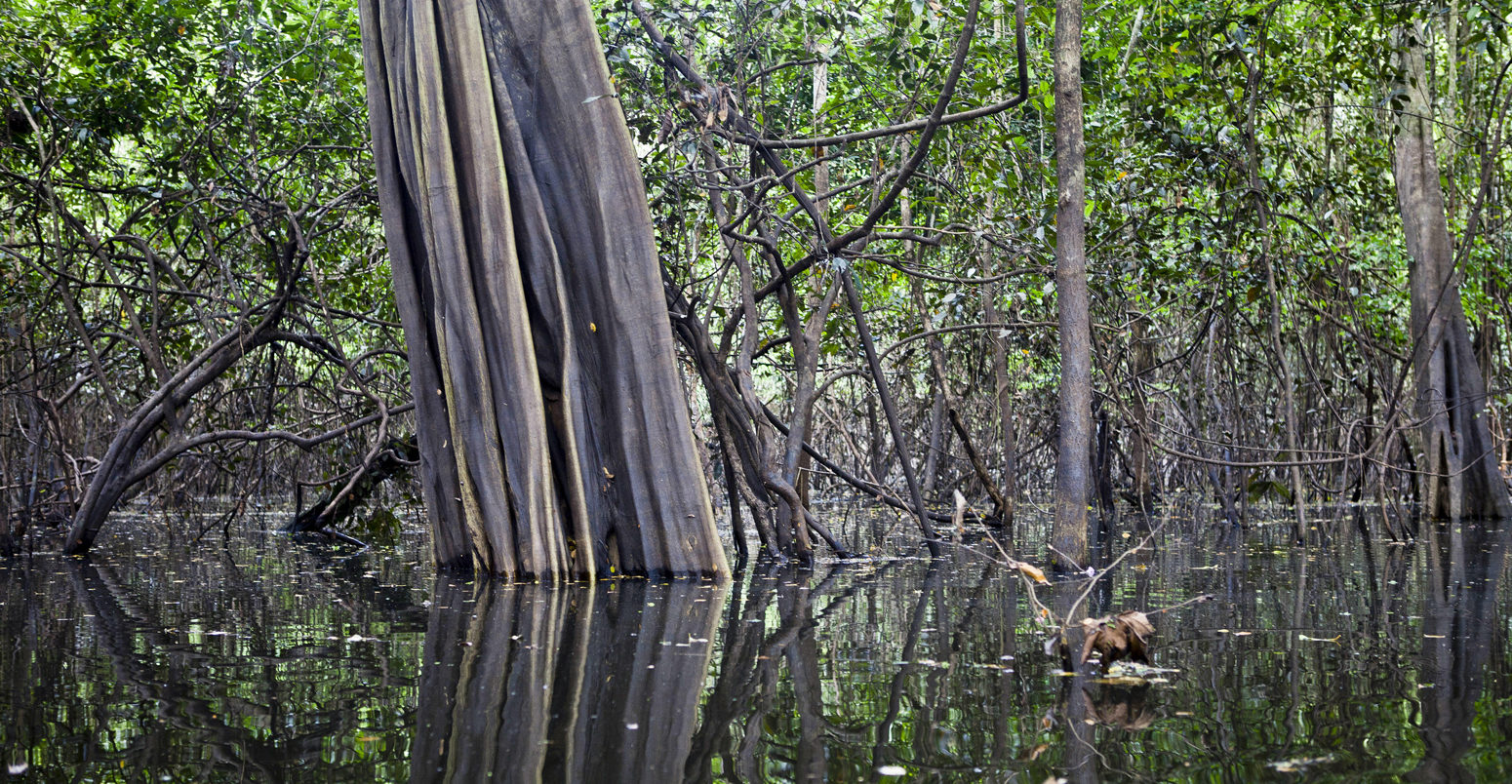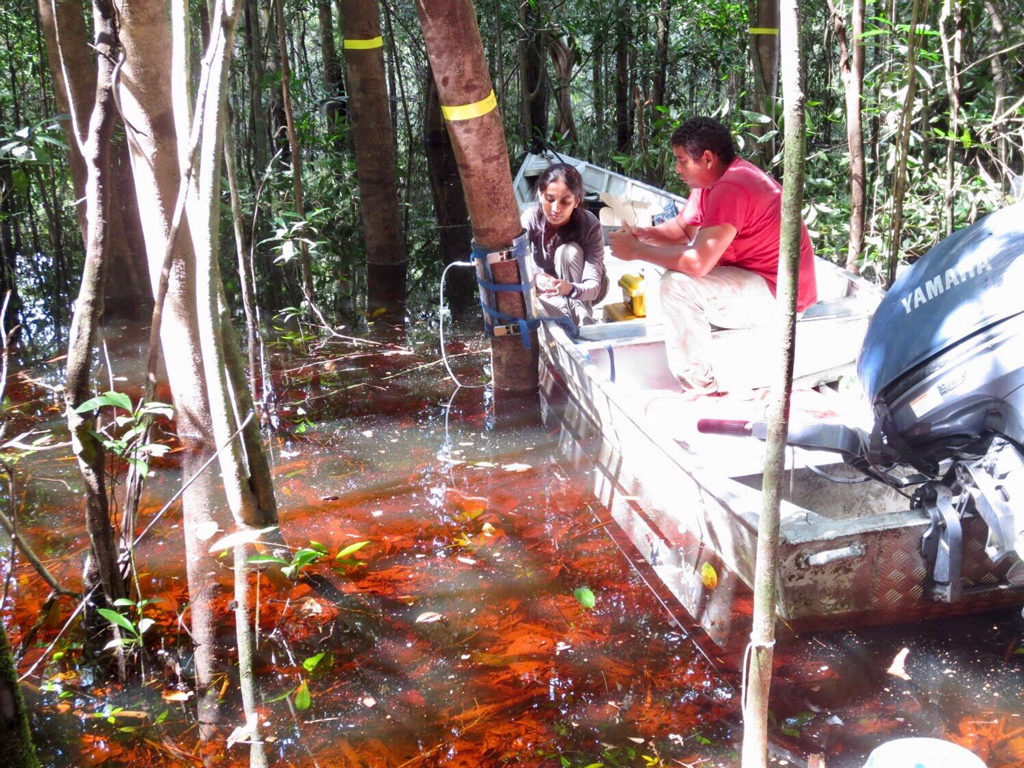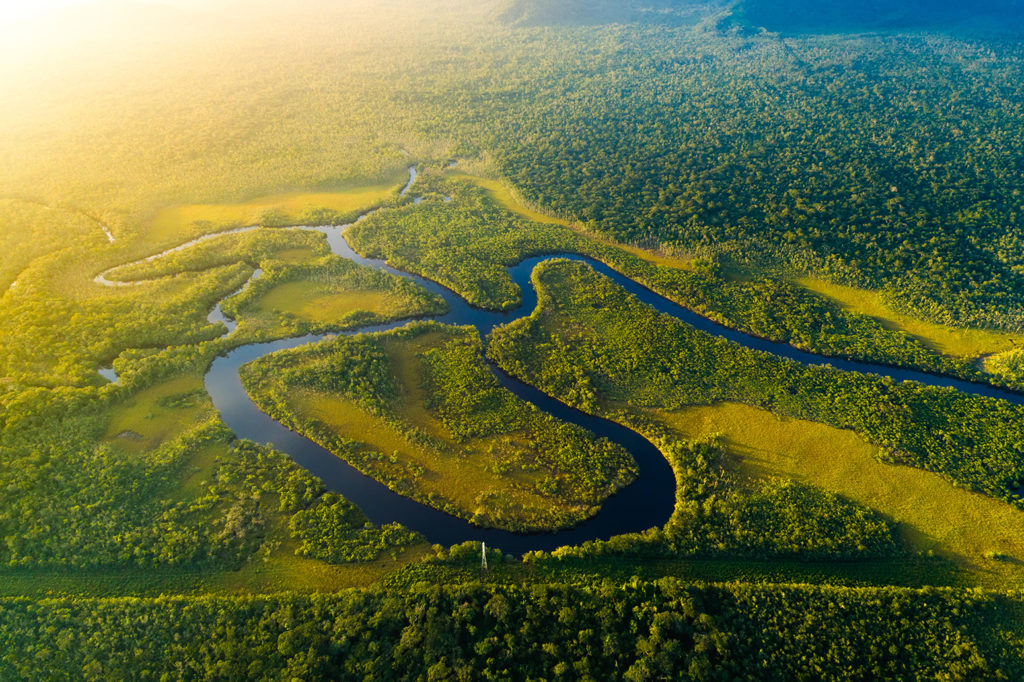
Guest post: Trees are the dominant source of methane emissions in Amazon wetlands

Prof Vincent Gauci
12.04.17
Prof Vincent Gauci
04.12.2017 | 4:00pmProf Vincent Gauci is chair in global change ecology in the School of Environment, Earth and Ecosystem Sciences at the Open University.
The world’s wetlands pack quite the climate punch. Not only can they store vast amounts of carbon in their saturated soils, they also release it as methane – a greenhouse gas that is 34 times more powerful than CO2 at trapping heat in the atmosphere.
While wetlands are also frequently overlooked in favour of upland forests when considering the exchange of greenhouse gases between ecosystems and the atmosphere, there have been some truly stunning breakthroughs this year in these ecosystems.
This year saw the discovery of huge reserves of carbon locked away as peat deep in the Congolese jungle – showing that even today, scientists are making the sorts of discoveries that might be expected from a Victorian explorer.
In our new Nature study, my colleagues and I add to this new wetlands knowledge by revealing how trees in the seasonally flooded Amazon floodplain are the major regional emission source of methane.
In doing so, we finally close the longstanding gap in the methane budget for the Amazon.
Measurement mismatch
Wetlands are incredibly diverse ecosystems. They occur as peaty deposits and as seasonal floodplains from the tropics to the Arctic. Some are dominated by mosses, others by rushes or trees where conditions allow.
As their name suggests, wetlands maintain a high water table for significant parts of the year. This near-constant saturation reduces the amount of oxygen that diffuses into sediments and soils, which in turn slows the decomposition of organic matter and allows peat to form.
This lack of oxygen is the same reason that “bog bodies” – ancient human remains that have been mummified in peat – are perfectly preserved for many thousands of years.
But the oxygen deficit in wetland sediments has another effect: what little decomposition that takes place results in the production of methane instead of CO2. This one process is what makes global wetlands the single largest source of methane to the atmosphere.
Understanding how much methane wetlands produce has, therefore, become a priority for ecologists and atmospheric scientists alike.
Methane emissions from wetlands can be measured in different ways and at different scales. On the small scale, scientists use “methane flux boxes” that gauge the amount of methane being released from the peatland surface. At the other end of the spectrum, aircraft and satellites can be used to calculate emissions at a huge scale.
In the Amazon, there has been a particular problem in that the satellite measurements – so called “top-down” measurements – are up to twice as big as estimates derived from bottom-up measurements on the ground. This can be thought of as a “gap” or “hole” in the methane budget.
So, something is clearly missing. This has been particularly troubling for scientists since model simulations based on top-down measurements suggest that the Amazon contributes up to one third of the global wetland methane emissions – making it the most important individual wetland in the natural methane cycle.
And if scientists can’t pin down how much methane is emitted from the Amazon, we will struggle to understand how the Amazon floodplain could respond to climate or other forms of change in terms of its methane output.
Trees as conduits of methane
In seeking to solve this problem we developed the idea that trees might be a missing route through which methane produced in the soil under forested wetlands makes it into the atmosphere.
The traditional view of methane emissions from wetlands is that it all comes out via diffusion from aquatic surfaces, through grass-like plants and similar vegetation or it is emitted abruptly as bubbles.
But our earlier studies of UK forested wetlands and Borneo peat swamp forest had convinced us that trees could emit methane. So, how does this happen?
It is a consequence of trees needing to get oxygen down to their roots to keep them alive in an otherwise anaerobic soil. The methane produced in the soil is emitted in the opposite direction, out of the stems and into the atmosphere.
But is this emission pathway big enough to account for the missing Amazon methane?
Along with my colleague Dr Sunitha Pangala and many other colleagues spanning the Universities of Linkoping, British Columbia and Rio de Janeiro, we devised a field campaign to answer this question.
Travelling across 13 locations within the Amazon floodplain where trees are sometimes flooded by up to 10m, we deployed chambers that collect methane, allowing us to measure methane emissions from aquatic surfaces, exposed soils, plants and – new for measurement campaigns in the Amazon – the stems and leaves of flooded trees.
In addition to these bottom-up measurements, colleagues at the University of Leeds, INPE in São Paulo and the National Oceanic and Atmospheric Administration in the US conducted a programme of fortnightly aircraft measurements of methane across the whole Amazon basin. These provided a new top-down estimate of all methane emissions from the Amazon.
In all we examined fluxes from more than 2,300 trees. Individual tree stem fluxes were highly variable and sometimes huge – often up to 200 times the size of emissions measured from trees in earlier studies in Borneo or the UK.
Scaling up our findings using maps of known floodplain extent, we estimate that wetland trees emit between 14m and 25m tonnes of methane each year.
This is similar in size to emissions from Arctic tundra, all the oceans combined or the total emission from wild animals and termites across the world combined.
Remarkably, we found that tree stems contributed around half of all methane emissions from the Amazon, which – when added to the emissions from other pathways – gave very close agreement with the top-down aircraft based emissions estimates.
Solving the mystery
While it is satisfying to solve the mystery of the hole in the Amazon methane budget, there are broader implications of this work.
We have shown that tree stems can be important surfaces of exchange for powerful greenhouse gases. This prompts the question of what else could they be exchanging with the atmosphere.
There’s no suggestion here that there should be any human intervention in this situation to reduce emissions. This is a natural ecosystem that has been producing methane in this way for millennia.
Moreover, the work identifies that trees can be large emitters of methane and care should be taken when restoring wetland areas in other regions with water-tolerant tree species in the tropics so that trees are selected to emit low amounts of methane lest a new problem be created.
Further, the Amazon floodplain is likely to undergo rapid hydrological change as a consequence of a massive dam building programme.
We don’t know the downstream consequences for emissions of such activity. However, any changes to the dynamic hydrology of these systems could alter the function of these trees in unpredictable ways with potentially highly-damaging consequences for our climate.
Pangala, S. R. et al. (2017) Large emissions from floodplain trees close the Amazon methane budget, Nature, doi:10.1038/nature24639
-
Guest post: Trees are the dominant source of methane emissions in Amazon wetlands



